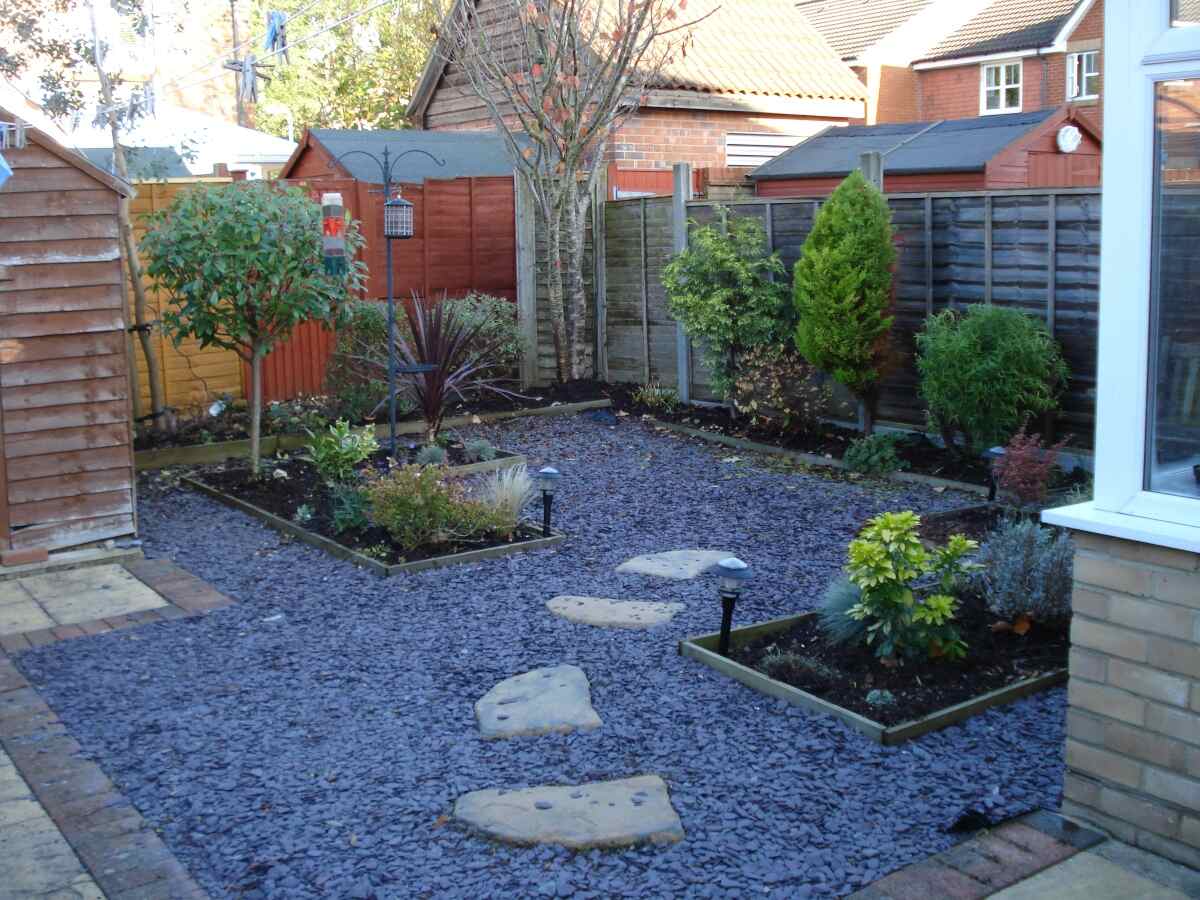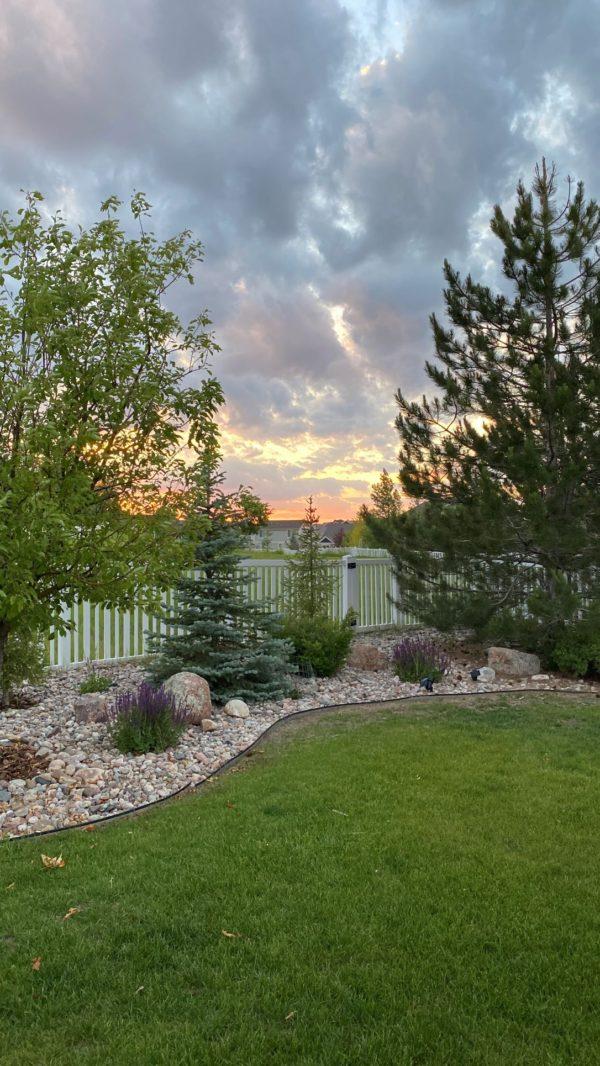Outdoor Lighting Installer vs. Landscape Lighting Installer: What’s the Difference?
Wiki Article
Discovering Different Sorts Of Landscaping to Boost Your Outdoor Atmosphere
Landscape design plays an important duty in defining exterior spaces. Different styles, from conventional gardens to modern-day minimalist styles, supply distinct benefits for enhancing visual appeals and feature. Incorporating components like xeriscaping and native plants can add to eco-friendly balance. Comprehending the interaction of hardscape and softscape is vital for developing welcoming environments. The options readily available can be overwhelming, motivating one to review which design ideal aligns with their vision for an outside refuge.Traditional Garden Landscape Design

While many modern gardens welcome minimalism and indigenous plantings, traditional garden landscape design stays a treasured technique that highlights proportion, framework, and ornamental functions. This style frequently includes official geometric layouts, where flowerbeds, paths, and hedges are set up with precision. Central focal factors, such as water fountains or sculptures, attract the eye and offer a feeling of harmony.Traditional landscaping often consists of a variety of plant kinds, showcasing seasonal blossoms and evergreen elements. Traditional shrubs, perennials, and annuals create lively shades and textures throughout the year. In addition, arches, pergolas, and trellises add upright passion and act as support for climbing up plants, boosting the overall aesthetic.The use all-natural products, such as rock and wood, further enriches the typical landscape, contributing to an ageless top quality. Ultimately, this style invites leisure and enjoyment, making it a cherished option for those seeking an attractive exterior environment.
Modern Minimalist Landscaping
Modern minimalist landscaping stresses simpleness and functionality, characterized by open rooms and tidy lines. Trick characteristics include a limited plant combination and thoughtful hardscape style that focuses on functionality and visual charm. Reliable plant option approaches further enhance the minimalist approach, creating tranquil outdoor environments that encourage relaxation and contemplation.Key Qualities of Minimalism
A growing trend in landscape design is the welcome of minimalism, identified by simpleness and performance. Minimalist landscaping focuses on clean lines, open spaces, and a limited color scheme, advertising a sense of peace. Components are thoroughly curated to prevent mess, permitting each component to stick out. Making use of natural products, such as rock and timber, boosts the organic feel while keeping an aesthetic balance. Furthermore, minimal layouts frequently incorporate geometric shapes, which can produce aesthetic interest without overwhelming the detects. Water features may be included, serving as prime focus that improve peacefulness. Overall, minimalism in landscape design emphasizes the appeal of restriction, allowing nature's inherent high qualities to radiate through in a harmonious outdoor setting.Plant Selection Approaches
Effective plant option is necessary for accomplishing the wanted aesthetic in modern-day minimalist landscape design. The focus must get on simplicity, making use of a limited scheme of plants that match each various other and the surrounding environment. Native plants are often excellent, as they need much less maintenance and water, promoting sustainability. Picking species with differing appearances and heights can include visual rate of interest without frustrating the space. Grouping plants in collections as opposed to spreading them enhances cohesion and strengthens the minimal motif. Evergreen varieties can provide year-round framework, while seasonal blossoms present subtle color modifications. Inevitably, the objective is to create a tranquil exterior space that symbolizes peace and harmony through thoughtful plant options.Hardscape Style Concepts
Crucial elements in hardscape design significantly add to the general appearances and performance of minimalist landscaping. This design method highlights clean lines and underrated products, developing a clean visual experience. Key parts consist of pathways, patios, and preserving wall surfaces, which not only define rooms however also enhance accessibility and functionality. Making use of products such as concrete, stone, and timber is common, reflecting a natural yet modern visual. Integrating symmetrical formats and geometric forms further enhances the minimal approach, allowing for an unified blend with bordering greenery. In addition, proper water drainage and erosion control are vital factors to consider, making sure longevity and sustainability. Inevitably, efficient hardscape design works as a foundation that enhances softscape elements while keeping balance and simpleness in outside environments.
Cottage-Style Landscape design
Cottage-style landscape design provides a delightful method to developing inviting exterior spaces. By integrating charming plant combinations, this design cultivates a sense of heat and fancifulness. The emphasis on relaxing, well-defined areas urges leisure and pleasure of nature.Enchanting Plant Combinations
Although lots of homeowners seek to produce an attractive outdoor area, attaining the charm of cottage-style landscaping usually hinges on thoughtful plant combinations. Vibrant flowers, rich vegetation, and fragrant natural herbs can be skillfully paired to evoke a sense of fancifulness and fond memories. As an example, incorporating lavender, daisies, and foxgloves creates a vibrant tapestry that brings in pollinators while giving a delightful fragrance. Integrating ornamental grasses like miscanthus can add texture and movement, complementing the softer flowers. In addition, blending seasonal and yearly plants guarantees continuous shade throughout the periods. The usage of climbers, such as clematis or honeysuckle, can improve vertical interest. Overall, these mixes not just enhance the landscape however likewise foster a welcoming and bewitching ambience.
Comfortable Exterior Spaces
Producing comfy outdoor spaces needs a mindful mix of comfort and charm, matching the lively plant mixes found in cottage-style landscaping - Bbq Island Installation. These locations frequently feature inviting seating plans, such as weather-beaten wooden benches or cushioned chairs surrounded by rich greenery. Soft illumination, like fairy lights or lanterns, adds warmth, transforming the area into a serene hideaway. Including elements such as trellises adorned with climbing roses or fragrant herbs enhances sensory experiences. Additionally, pathways made of rustic stones welcome expedition and link with nature. Attractive touches like birdbaths or wayward yard art add to a sense of fancifulness. Inevitably, the goal is to develop an enchanting atmosphere that motivates leisure and satisfaction of the appeal surrounding these comfy outdoor havensXeriscaping for Water Preservation
Just how can neighborhoods balance aesthetic landscaping with journalism demand for water conservation? Xeriscaping becomes a practical service, advertising lasting methods that decrease water usage while enhancing exterior appeal. This landscaping method concentrates on making use of drought-resistant plants belonging to the area, which need significantly less water than typical gardens. By incorporating compost and effective irrigation systems, xeriscaping lowers dissipation and runoff, more saving precious water resources.Communities can develop visually enticing landscapes with careful preparation, selecting a varied range of textures and colors that grow in arid problems. Additionally, xeriscaping urges making use of decorative rocks and ornamental gravel, using appealing and useful options to grass lawns. As areas accept this environmentally friendly approach, they not just reduce their water usage yet likewise advertise biodiversity and resilience in their regional communities. Inevitably, xeriscaping works as a demo of the consistency between visual allure and environmental obligation.Hardscape Layout Elements
Hardscape design aspects play a vital duty in boosting outside rooms by providing structure and capability. These non-plant attributes, such as patios, walls, walkways, and decks, develop visual interest while offering sensible purposes. Using products like concrete, block, and rock, hardscaping adds to the general visual allure and toughness of a landscape.Incorporating hardscape elements can specify locations within a backyard, guiding movement and encouraging social interaction. As an example, a well-placed pathway can connect different areas of the yard, while maintaining wall surfaces can manage elevation modifications and protect against erosion.Furthermore, hardscape layout can boost ease of access and safety, offering stable surfaces for walking or lounging. Efficient assimilation of hardscape elements matches soft landscaping, making sure a well balanced outdoor setting. Eventually, thoughtful hardscape design improves not just the beauty of exterior rooms yet likewise their use, making them a lot more inviting and practical for visitors and house owners alike.Outdoor Living Spaces
While outdoor space offer a seamless blend of comfort and nature, they function as crucial expansions of a home, enhancing lifestyle and recreation. These locations can consist of outdoor patios, decks, or outdoor cooking areas, developed to promote leisure and entertainment. Landscape Lighting Installer. By including useful furniture and stylish decor, property owners produce inviting environments for celebrations or peaceful evenings.The assimilation of shade frameworks, such as awnings or pergolas, secures versus the aspects while maintaining an open feeling. Fire pits and outdoor heating systems extend functionality right into cooler months, providing warmth and atmosphere. Furthermore, integrating illumination functions enhances the area's usability after sunset, creating an enchanting evening atmosphere.Landscaping aspects, such as pathways and borders, even more define these areas, directing motion and including aesthetic allure. Eventually, outside space change backyards into versatile hideaways, advertising a way of living that embraces both nature and comfortIndigenous Plant Landscaping
Indigenous plant landscaping highlights using native plants to produce harmonious and sustainable outdoor environments. This method not only enhances biodiversity but also conserves water and reduces the need for chemical plant foods and chemicals. By choosing plants that are belonging to a certain area, home owners can assure that their landscapes are well-adapted to neighborhood soil and climate problems, causing reduced maintenance requirements.Additionally, native plants provide important habitats for local wild animals, consisting of , butterflies, and birds, Landscape Lighting Installer advertising eco-friendly health and wellness. Landscape develops that incorporate these plants typically feature naturalistic layouts that imitate local communities, fostering a feeling of location and connection to the environment.Furthermore, indigenous plant landscaping can add to soil stability and disintegration control, making it an environmentally responsible choice. Generally, this method not only beautifies exterior areas but additionally supports the local ecosystem, developing a lasting balance between human task and nature.
Frequently Asked Inquiries
Just How Can I Select the Right Landscape Design Design for My Home?
Selecting the ideal landscaping style for a home includes evaluating the building's design, climate, and personal choices. Retaining Wall Installation. Looking into numerous designs and seeking advice from experts can offer guidance to develop a harmonious exterior space tailored to individual needsWhat Is the Ordinary Price of Professional Landscape Design Providers?
The average price of expert landscape design solutions generally ranges from $1,000 to $5,000, relying on task area, intricacy, and dimension. Homeowners must take into consideration obtaining multiple quotes to guarantee they receive reasonable pricing and high quality service.How Usually Should I Maintain My Landscaped Yard?
The frequency of preserving a designed lawn typically depends on the plants and features existing. Normally, regular maintenance every couple of weeks is encouraged, with seasonal jobs increasing in regularity during peak expanding seasons for ideal health and wellness and looks.Are There Landscaping Choices for Tiny Urban Spaces?

Various landscape design choices exist for little metropolitan rooms, consisting of upright yards, container plants, and rooftop yards. Incorporating these aspects can maximize restricted areas while giving plant, boosting aesthetic appeals, and boosting air top quality in city settings.
What Plants Are Best for Attracting Regional Wildlife?
The very best plants for bring in regional wildlife include indigenous flowering species, berry-producing shrubs, and varied yards. These plants give important food and habitat, promoting a prospering ecological community that sustains numerous birds, pests, and tiny creatures. Lots of home owners seek to create a picturesque outside space, attaining the appeal of cottage-style landscaping frequently pivots on thoughtful plant combinations. Producing cozy outdoor spaces needs a cautious mix of convenience and appeal, enhancing the vivid plant mixes found in cottage-style landscaping. Native plant landscaping emphasizes the usage of indigenous plants to produce unified and sustainable outside settings. Landscape develops that incorporate these plants often include naturalistic layouts that resemble neighborhood ecological communities, fostering a sense of place and link to the environment.Furthermore, native plant landscaping can add to dirt security and erosion control, making it an eco responsible selection. Different landscaping options exist for little city areas, consisting of vertical gardens, container plants, and rooftop yards.Report this wiki page